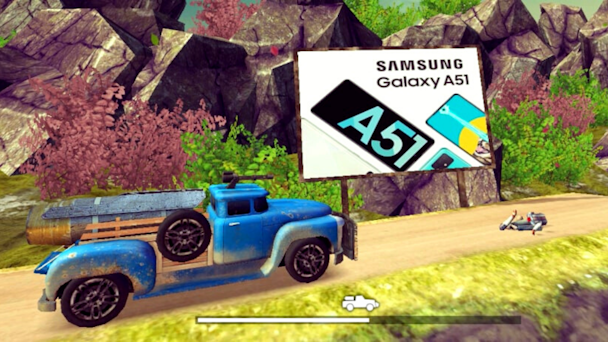Anzu partners Oracle to know if 3D in-game ads are seen: ‘We needed these KPIs’
In-game advertising firm Anzu is boasting a ‘first-to-market’ deal that will reveal whether gaming creative has been viewed by players – something marketers have been demanding. The Drum questions Anzu’s co-founder and chief executive officer Itamar Benedy about how it is meeting this need.

Anzu has announced it will partner with Oracle Moat to provide advertisers with third-party viewability verifications
Anzu announced today that it will partner with Oracle Moat to provide advertisers with third-party viewability verifications and in-view metrics, measuring the percentage of the creative on-screen, the ad size, the time in view and the angle. It marks the complex nature of measuring viewability in 3D gaming worlds as opposed to 2D webpages.
Benedy says: “The challenge with the gaming environment is that it is an entirely 3D world, and it is cross-platform.”
It had to build its own tech to solve this problem, and most adtech firms in gaming and 3D worlds will have to follow suit. This, he says, lets advertisers compare viewability in its gaming inventory across other channels.
“This technology is significant because it is the only efficient way to do real-time analytics in a 3D world that is acceptable by the terms and conditions of the console platforms and is efficient enough that AAA game publishers will accept it. If our thesis is correct, we are the only company in the world to lock this technology in a patent.”
It implements a ray-casting algorithm (basically the lines of vision that underpin 3D worlds) to place players and determine what they can see.
“This tech allows us to recognize different content inside the world in real-time and collect important data signals. With them, we can make a decision that is 100% accurate, concluding whether the placement is fully viewable according to existing IAB and MRC standards.”
Additionally, Oracle Moat will work to verify impressions delivery and detect invalid traffic (IVT) across the ads running in in-game banner and video formats. The blended in-game placements that appear on 3D objects such as roadside billboards, stadium banners and the sides of buildings mirror the inventory of the out-of-home (OOH) industry. It is available in games studios including Ubisoft, Saber Interactive, MyGames and Amanotes.
To date, Anzu has onboarded big brands such as American Eagle, PepsiCo, Samsung and Vodafone.
It’s had to jump through a lot of hoops to get the product up to scratch. It’s rushing to answer advertiser questions about the veracity of the space with previous partnerships with Comscore, Kantar and Nielsen to detail the effectiveness of the inventory and the wider medium.
Benedy points out that in-game ads, while appearing in great environments, are often not clickable. So viewability in gaming is of higher importance than in wider digital platforms.
He adds: “No other in-game ad company has a third-party ad viewability audit for their inventory. Our investors include NBCUniversal, WPP and Sony, along with a number of other notable ones that will be unveiled soon.”
The space is set to boom. According to MediaRadar, video game advertising is up 17% year-on-year, up to $421.2m in 2021. In 2022, according to Newzoo, the global number of players will pass the 3 billion mark. Some brands are inputting experimental budgets into the space, while others are already seeing the writing is on the wall.
Anzu, when pressed, pointed at its work with American Eagle in Roblox as a fine example of how it can bring brands into the space, with clothing, experiences and integrated ads.
There are additional case studies for its Vodafone and 7-Eleven work.
Check out more gaming advertising stories in our dedicated hub.

